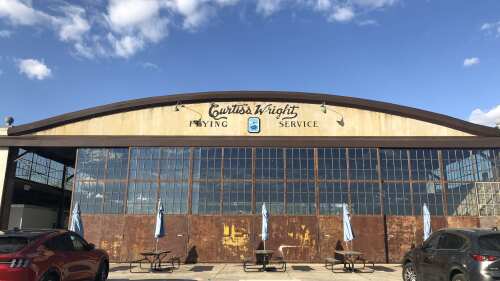#DYK that last year’s Greek Festival brought in over 170,000 attendees? Unfortunately, this year the famous Soda City event has been cancelled because of COVID-19 concerns with large crowds + such close proximity to one another.
And while we are bummed we won’t get to eat our weight in spanakopita + baklava, we thought now would be a good time to share some fast facts from the SC Picture Project about The Holy Trinity Greek Orthodox Church on Sumter St.
The Interior of The Holy Trinity Greek Orthodox Church | Clark Berry Photography
🇬🇷 | The Holy Trinity Greek Orthodox Church in Columbia began in 1936 when a small group of Greek immigrants started worshipping together. By 1939, the congregation had a frame house for their services.
🇬🇷 | In 1942, they became an official member of the Archdiocese of North and South America.
🇬🇷 | In 1949, the congregation built a bigger house of worship at Sumter + Calhoun Streets to keep up with the growth of the Greek community.
🇬🇷 | The church was originally called Assumption Greek Orthodox Parish. They changed their name to The Holy Trinity Greek Orthodox Church after their church was built.
🇬🇷 | The word Orthodox means straight teaching or straight worship + is derived from the Greek words: orthos, meaning “straight,” and doxa, meaning “teaching” or “worship.”
🇬🇷 | In 1988, the church began hosting the annual Greek Festival in downtown Columbia.
🇬🇷 | Less than 20 years later, the congregation was so large they needed an even bigger church.
🇬🇷 | In 2011, they built the $6 million dollar church you see now. The previously built church is still intact + on the premises and is used for smaller services.
🇬🇷 | The church held a thyranoixia (door-opening ceremony) when it was finished + the Metropolitan Alexios of the Metropolis of Atlanta and Archbishop Demetrios (a leader in the Greek Orthodox Church in America) were present.
🇬🇷 | The interior of the church contains elaborate iconography. Icons are known as the distinctive art form of the Orthodox Church. They signify the presence of the person(s) depicted in the work.












